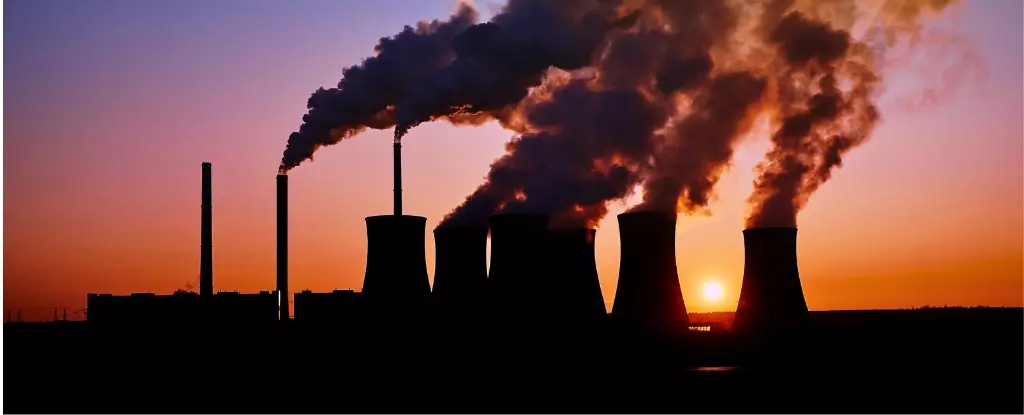Recent studies have presented a sobering conclusion: our planet is likely surpassing the critical threshold of 1.5°C of global warming, as established by the Paris Agreement of 2015. This agreement aimed to limit climate change by reducing greenhouse gas emissions, with a firm objective to prevent temperatures from rising beyond this pivotal point compared to pre-industrial levels. However, the temperature records set in 2024 reveal a disconcerting trend that not only challenges previous assumptions but implies that humanity is at a crossroads, faced with urgent implications.
The global average temperature soared to approximately 1.6°C above late 19th-century levels in 2024. This surge, which was attributed largely to human-induced climate change, was exacerbated by natural phenomena like the El Niño weather pattern that occurred early in the year. These variations in temperature from year to year complicate the climatic narrative, making it challenging to declare that the 1.5°C threshold has been permanently crossed based solely on annual data. Nevertheless, markings of individual days or months exceeding the threshold are evidence of a deeper trend at play.
The recent independent studies from Europe and Canada employ differing methodologies to explore whether isolated years surpassing 1.5°C signal a long-term breach of this critical limit. The European research focused on historical warming patterns, discerning that when average temperatures reach certain points, the subsequent two decades commonly reflect similar trends. Conversely, the Canadian study concentrated on month-to-month data, noting that June 2024 marked the twelfth consecutive month where temperatures exceeded the 1.5°C threshold. This consistency suggests an imminent long-term commitment to warming, pushing the planet further into uncharted territory.
Alarmingly, both studies indicate that even the most stringent emissions reductions initiated today may not avert further crossovers of this limit. The research argues that humanity’s current trajectory—evidenced by a stubborn rise in greenhouse gas emissions—hints at an impending climatological crisis that could stretch beyond human control.
To grasp the gravity of the situation, it’s crucial to recognize the scale of emissions produced since the Intergovernmental Panel on Climate Change first warned of the impacts in 1990. Since then, carbon dioxide emissions have surged by about 50%. This reliance on fossil fuels not only perpetuates global warming but also undermines efforts to meet the targets established in the Paris Agreement. As we approach the potentially irreversible threshold of 1.5°C, the mitigation strategies we envision must undergo a dramatic transformation.
Reaching a state of net-zero emissions is non-negotiable if we intend to stabilize our climate—and even that doesn’t guarantee an immediate reversal of warming trends. The scientific consensus suggests that achieving net-negative emissions, where we remove more greenhouse gases from the atmosphere than we produce, will be essential to cool the planet down. However, this undertaking is daunting and will demand unprecedented global cooperation and innovative technological solutions.
The consequences of unmitigated climate change are already visible. Nations worldwide are grappling with severe consequences—from Australia’s ecosystems, like the Great Barrier Reef, suffering extreme stress from rising temperatures to increasing incidents of bushfires and heatwaves. The implications extend beyond environmental degradation; they threaten social and economic stability as well. Vulnerable communities, especially in developing nations, bear the brunt of climate impacts, leading to increased inequalities.
In light of these challenges, it is worth noting that there are glimmers of hope. The renewable energy sector is witnessing significant advancements, and many countries are recording declines in fossil fuel usage. These positive developments suggest a potential turning point in our battle against climate change and demonstrate that innovation can drive progress.
These recent studies lay bare the reality of the climate crisis, serving as a clarion call for immediate, transformative action. There is a paramount need for developed nations to support their less affluent counterparts that are facing the harshest consequences of climatic changes. Although some measures have been taken, a substantial increase in international cooperation and financial assistance is imperative to equip vulnerable nations with the resources they need to adapt effectively.
Decarbonizing our economies and societies must remain a focal point if we are to ameliorate the ongoing climate emergency. While optimism exists, it must be coupled with action; complacency is no longer an option. Humanity must act decisively, or we risk exacerbating our circumstances, further pushing the planet towards irreversible damage, potentially leading to devastating consequences for generations to come. The time to act is now.


Leave a Reply